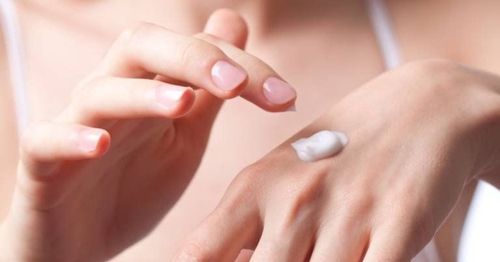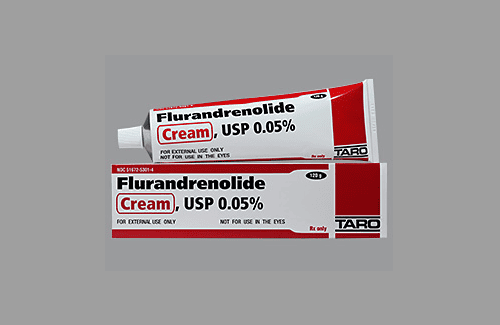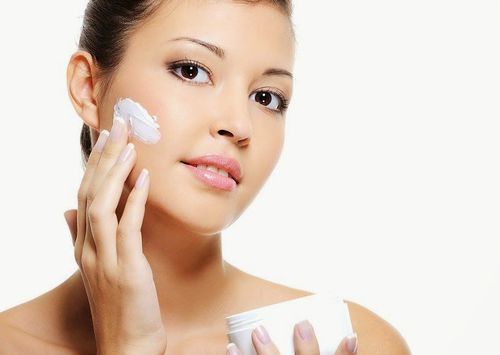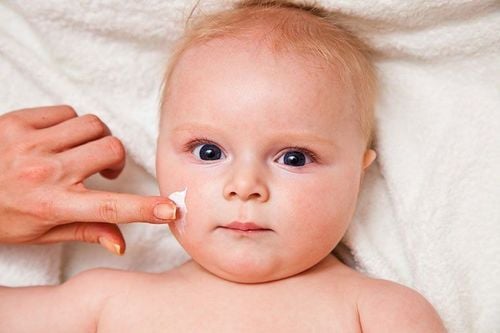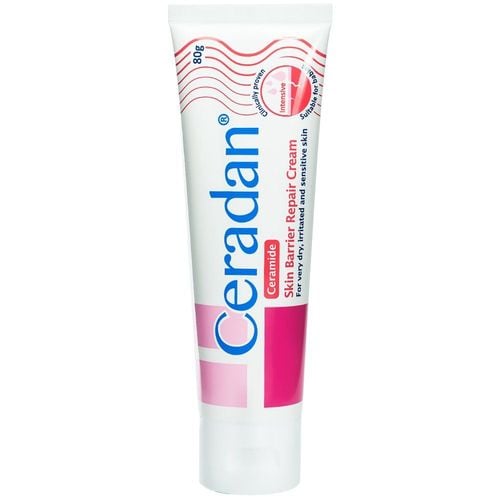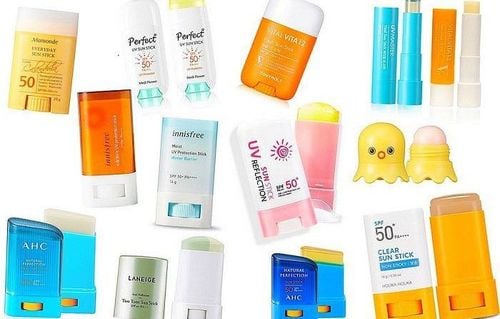This is an automatically translated article.
The article was professionally consulted by Specialist Doctor I Tran Van Sang - Dermatologist - Department of Medical Examination & Internal Medicine - Vinmec Danang International General HospitalAtopic dermatitis is a very common disease, especially in young children, the disease often recurs. Moisturizing the skin is a particularly important treatment step in the treatment of atopic dermatitis both in the acute and chronic stages of the disease. Good moisturizing will help improve symptoms of dry and itchy skin, restore skin barrier function, help reduce the duration and extent of corticosteroid use.
1. Learn about atopic dermatitis
Atopic dermatitis is a disease with acute, subacute or chronic manifestations. An important feature of the disease is its frequent recurrence. Most cases begin in childhood. The typical symptom of atopic dermatitis is dry skin lesions accompanied by itching. The disease often has genetic, familial factors and often occurs in people with other allergic conditions such as asthma, allergic rhinitis. Diagnosis of the disease is not difficult, based on clinical symptoms, blood IgE levels are often elevated.The cause of atopic dermatitis is not clearly understood, but there are several factors that are thought to play a major role in the pathogenesis, they include: genetic factors, immunity, infection , the skin barrier is damaged.
Normal skin structure consists of many layers of cells linked together by cementitious substances that form a protective barrier of the skin, preventing water loss and penetration of foreign substances and microorganisms. infect the body. In atopic dermatitis, there is a decrease in the production of filaggrin, loricrin, and a decrease in substances that bind skin cells, which increases water loss, leading to dry skin. In addition, the skin barrier can also be damaged by the protease enzymes of house mites and Staphylococcus aureus.
Successful management of atopic dermatitis involves counseling patients and families about the disease, reducing signs and symptoms of the disease, and preventing and reducing the severity and frequency of flare-ups. Treatment includes education to avoid the predisposing factors, skin care, and drug therapy.
Moisturizing the skin is a particularly important step in the treatment of atopic dermatitis both in the acute and chronic stages of the disease. Good moisturizing helps improve symptoms of dry and itchy skin, restores skin barrier function, helps to reduce the duration and extent of corticosteroid use.
2. The role of moisturizing in the treatment of atopic dermatitis

The mechanism of action of moisturizers is to create a protective barrier, separating the skin and the environment, reducing the loss of water vapor through the skin, and allowing the skin to re-hydrate through the ability to penetrate. water from the inner layers of the skin or from the environment, while protecting the skin from environmental trauma.
2.2.The role of moisturizers in the treatment of atopic dermatitis Reduce inflammation, relieve itching, relieve dryness: The treatment guidelines for atopic dermatitis recommend using the right moisturizer to help protect the skin. skin, preventing and maintaining the skin barrier. Emollients and skin protectants help soften skin's texture and relieve itching caused by excessive dryness. Emollients also form a protective layer that helps retain water, prevents water evaporation through the skin, restores the physiological barrier of the skin, and inhibits the penetration of irritants.
Several studies have demonstrated the benefit and safety of emollients in the treatment of atopic dermatitis in different age groups. The composition of emollients can vary widely, making a product suitable for each patient and condition.
Restores the skin barrier, prevents the adhesion of bacteria, prevents the penetration of irritants.
Reduce duration and frequency of corticosteroid use: Because corticosteroids are associated with many risks and complications, including hirsutism, vasodilation, and skin atrophy, long-term use is not recommended.
Some studies suggest that corticosteroids can be reduced when emollients are used in combination with corticosteroids. In a 3-week study of children with mild to moderate atopic dermatitis, once-daily administration of hydrocortisone cream 2.5% plus an emollient was compared with hydrocortisone 2.5% twice daily. per day alone showed significant improvement in skin symptoms and lesion size at 7 days in both treatment groups. This suggests that the use of moisturizers can reduce the amount of corticosteroids that must be administered to the patient.
Maintenance and Prevention of Recurrence: Maintaining optimal hydration and addressing barrier dysfunction in atopic dermatitis can reduce the incidence of excessive dryness and irritation.
A uniform recommendation to use emollients at least twice daily with or without symptoms; and should be used after bathing. Atopic dermatitis patients should use an emollient continuously to prevent dryness and irritation, with adults typically using 500-600 g per week and children using 250 g per week. Moisturizers should be used all over the body, not just on dry areas. Can be used for a long time, safely and without side effects to improve quality of life for patients with atopic dermatitis.
2.3.Main types of moisturizer There are many different formulations of moisturizers such as lotion, creams, ointments, oils... depending on the characteristics of the skin to be used, you can choose. Different types. Lotions are often used on the scalp or face to reduce clogged pores. Cream, lotion form is often used because of its high aesthetics. Fat, oil form is often used for dry, thick skin to help absorb better. Ointment / Oil: Ointment is a slightly thick substance that helps to hydrate the skin by preventing water loss. Lubricants have no added ingredients, while ointments contain a small percentage of water or other ingredients to make the ointment softer. Ointment is very good at helping the skin retain moisture but often causes greasy and clogs pores, so it is often used for thick skin areas such as palms and feet. Creams: Creams are a mixture of drugs in water or another liquid. They contain a lower percentage of oil, or ointment, making them less sticky. However, creams often contain stabilizers, preservatives to prevent their key ingredients from separating, and additives that can cause skin irritation or even allergic reactions for some people. Lotion: Lotion is a mixture of oil and water, of which water is the main ingredient. Most lotions don't work as well as moisturizers, so they're often used by people with mildly dry skin because the water in the lotion evaporates quickly. 2.4.Mechanism of action of moisturizers Anti-inflammatory effect: New moisturizers are not only moisturizing, but also have anti-inflammatory effects such as glycerrhetinic acid, telmsteine, palmitoylethanolamine, or ingredients are natural lipids on the skin (ceramides in Ceradan, Physiogel). Emollients: Improves skin hydration and makes skin soft and shiny. It has the effect of filling the gap between the keratinocytes, making the cells more sticky, preventing allergens and irritants from entering the skin. For example, castor oil, oatmeal, avocado oil, Propylene glycol, Isopropyl palmitate... Acts as humectants: Absorbs water from the environment and channels water from the dermis. For example, Glycerin, honey, Hyaluronic acid, Panthenol, Urea. Occlusive effect: Creates a protective film to prevent water vapor from escaping. Often accompanied by the effect of water retention. For example, Lanolin, Petrolatum, olive oil, mineral oil, cetyl alcohol, Parrafin...
3. Instructions for using moisturizer
Choose the right moisturizer for each individual, the location of the injury, and the dryness of the skin. Use at least 2-3 times a day. If the skin condition is very dry, the frequency of use can be increased. Use immediately after bathing/washing hands for 3-5 minutes to maintain skin moisture. In the acute phase, can be used in combination with corticosteroids in the first 2 weeks. Apply corticosteroids first, then apply moisturizer on top. Use for adults 500-600g/week, children 250-300g/week. It is recommended to maintain daily use even if there is no damage to prevent disease onset. Avoid using on mucous membranes such as eyes, nose, mouth. Cream form often has preservatives, so it can cause irritation and allergies when used. Atopic dermatitis needs to be treated early from the acute stage to maintenance treatment. Moisturizers play an extremely important role, as a basic treatment step in the management of atopic dermatitis. A moisturizer with clinical evidence of efficacy and safety in children should be selected when treating atopic dermatitis in this particular population.
Currently, the Asthma - Allergy and Immunology Specialist at Vinmec Time City International Hospital has a package of examination and advice on treatment of atopic dermatitis for all customers of all ages. The product package gives customers an overview of the condition of atopic dermatitis, and advises on measures to help prevent recurrence.
When registering for the package of examination and consultation for treatment of atopic dermatitis, customers will receive:
Dermatological examination (without appointment) Perform tests such as: IgE quantification, fresh mycobacteria, Specific IgE levels for respiratory and food allergens (Panel 1 Viet), Rida Allergy Screen test (panel 1)
Please dial HOTLINE for more information or register for an appointment HERE. Download MyVinmec app to make appointments faster and to manage your bookings easily.





